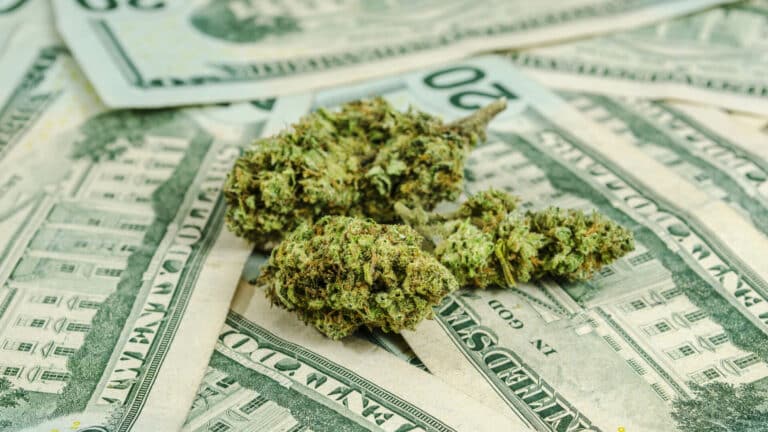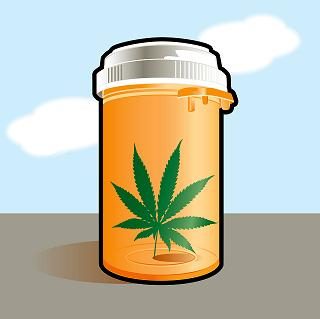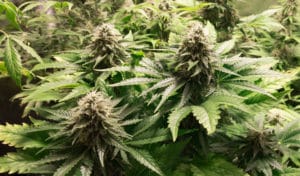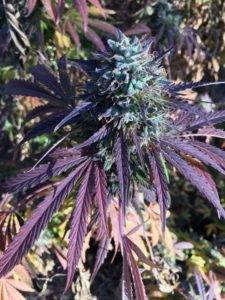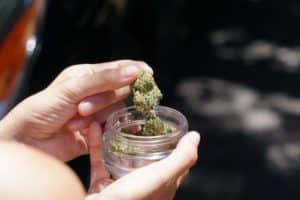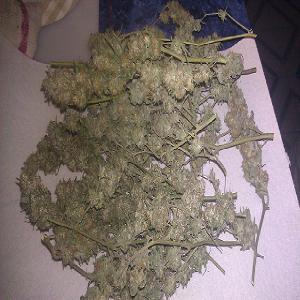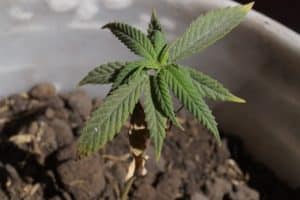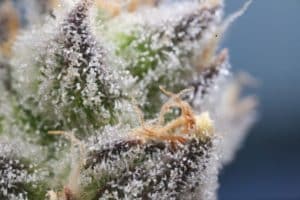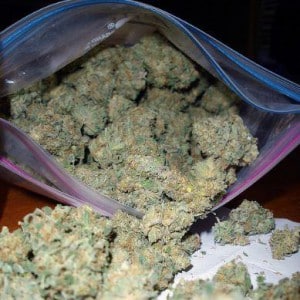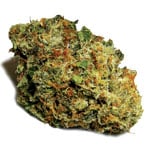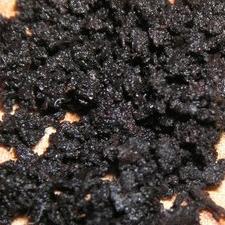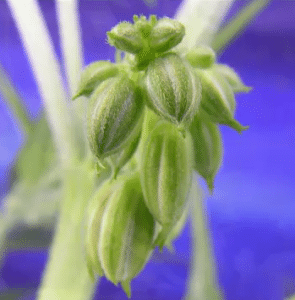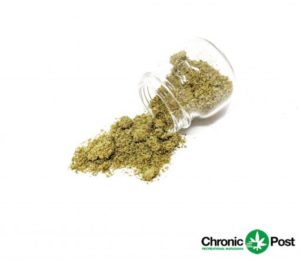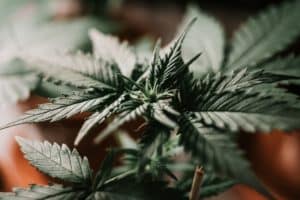 I listen to quite a bit of talk and news radio while I’m driving, and I heard a story about how Washington State has an initiative on the Fall ballot (11-83) to privatize alcohol. As an activist who is fighting for marijuana legalization in the Northwest, I can’t help but take this opportunity to try to explain to Washington voters why privatization of alcohol is a bad idea, and privatization on marijuana is what they should really be voting for (even if it’s not on the ballot). These are facts provided by Safer Alternative For Enjoyable Recreation:
I listen to quite a bit of talk and news radio while I’m driving, and I heard a story about how Washington State has an initiative on the Fall ballot (11-83) to privatize alcohol. As an activist who is fighting for marijuana legalization in the Northwest, I can’t help but take this opportunity to try to explain to Washington voters why privatization of alcohol is a bad idea, and privatization on marijuana is what they should really be voting for (even if it’s not on the ballot). These are facts provided by Safer Alternative For Enjoyable Recreation:
Marijuana is far less toxic and less addictive than alcohol.
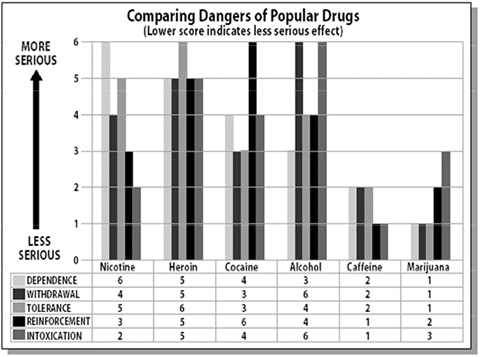
Source: Jack E. Henningfield, PhD for the National Institute on Drug Abuse (NIDA), Reported by Philip J. Hilts, New York Times, Aug. 2, 1994 “Is Nicotine Addictive? It Depends on Whose Criteria You Use.”
Alcohol is one of the most toxic drugs, and using just 10 times what one would use to get the desired effect can lead to death. Marijuana is one of — if not the — least toxic drugs, requiring thousands of times the dose one would use to get the desired effect to lead to death. This “thousands of times” is actually theoretical, since there has never been a recorded case of marijuana overdose. Source: The American Scientist (Magazine of Sigma Xi, the Scientific Research Society). Gable, Robert. May-June 006. https://www.americanscientist.org/issues/num2/the-toxicity-of-recreational-drugs/1
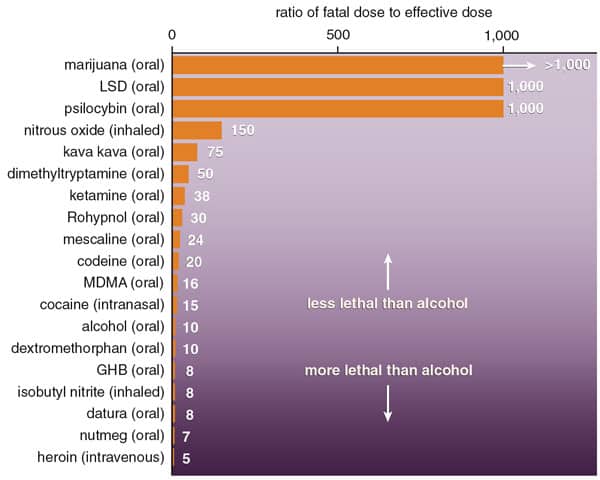
There are hundreds of alcohol overdose deaths each year, yet there has never been a marijuana overdose death in history. The consumption of alcohol is also the direct cause of tens of thousands of deaths in the U.S. each year.
In 2001, there were 331 alcohol overdose deaths and 0 marijuana overdose deaths. Source: U.S. Centers for Disease Control (CDC). Source: https://www.cdc.gov/mmwr/preview/mmwrhtml/mm5337a2.htm
Long-term marijuana use is far less damaging than long-term alcohol use.
Excessive alcohol consumption is the third leading preventable cause of death in the United States and is associated with multiple adverse health consequences, including liver cirrhosis, various cancers, unintentional injuries, and violence.
The U.S. Centers for Disease Control reported 20,687 “alcohol-induced deaths” (excluding accidents and homicides) in 2003. Source: https://www.cdc.gov/nchs/fastats/alcohol.htm
The CDC has no reports of “marijuana-induced deaths.” (In reality, there may be 2-5 deaths each year attributed to marijuana, but this article — https://bbsnews.net/bw2005-02-01.html — describes how these are actually deaths attributable to other causes but “blamed” on marijuana due to the way the data is collected.)
There is little evidence, however, that long-term cannabis use causes permanent cognitive impairment, nor is there is any clear cause and effect relationship to explain the psychosocial associations.
There are some physical health risks, particularly the possibility of damage to the airways in cannabis smokers. Overall, by comparison with other drugs used mainly for ‘recreational’ purposes, cannabis could be rated to be a relatively safe drug. Source: Iversen, Leslie. Current Opinion in Pharmacology. Volume 5, Issue 1, February 2005, Pages 69-72. Long-term effects of exposure to cannabis. University of Oxford, Department of Pharmacology.
The latest and most comprehensive research on marijuana has concluded that it does not contribute to the development of lung cancer. Source: https://www.washingtonpost.com/wp-dyn/content/article/2006/05/25/AR200605…
There has never been a documented case of lung cancer in a marijuana-only smoker, and recent studies find that marijuana use is not associated with any type of cancer. The same cannot be said for alcohol, which has been found to contribute to a variety of long-term negative health effects, including cancers and cirrhosis of the liver.
Alcohol use contributes to aggressive behavior and acts of violence, whereas marijuana use reduces the likelihood of violent behavior.
Alcohol is clearly the drug with the most evidence to support a direct intoxication-violence relationship.
Cannabis reduces likelihood of violence during intoxication… Source: Hoaken, Peter N.S., Sherry H. Stewart. Journal of Addictive Behaviors. 28, pages 1533-1554. Drugs of abuse and the elicitation of human aggressive behavior. Dept. of Psychology, University of Western Ontario. Dept. of of Psychiatry, Dalhousie University.
Alcohol use is highly associated with violent crime, whereas marijuana use is not.
About 3 million violent crimes occur each year in which victims perceive the offender to have been drinking at the time of the offense.
Two-thirds of victims who suffered violence by an intimate (a current or former spouse, boyfriend, or girlfriend) reported that alcohol had been a factor.
Among spouse victims, 3 out of 4 incidents were reported to have involved an offender who had been drinking. Source: U.S. Department of Justice. Bureau of Justice Statistics. National Crime Victimization Survey 2002.
Alcohol use contributes to the likelihood of domestic violence and sexual assault and marijuana use does not.
Of the psychoactive substances examined, among individuals who were chronic partner abusers, the use of alcohol and cocaine was associated with significant increases in the daily likelihood of male-to-female physical aggression; cannabis and opiates were not significantly associated with an increased likelihood of male partner violence.
…the odds of any male-to-female physical aggression were more than 8 times (11 times) higher on days when men drank than on days of no alcohol consumption. The odds of severe male-to-female physical aggression were more than 11 times (11 times) higher on days of men’s drinking than on days of no drinking. Moreover, in both samples, over 60% of all episodes occurred within 2 hours of drinking by the male partner. Source: Fals-Stewart , William, James Golden, Julie A. Schumacher. Journal of Addictive Behaviors. 28, pages 1555-1574. Intimate partner violence and substance use: A longitudinal day-to-day examination. Research Institute on Addictions, University at Buffalo, State University of New York
Alcohol use is prevalent in cases of sexual assault and date rape on college campuses, whereas marijuana use is not considered a contributing factor in cases of sexual assault and date rape.
A Harvard School of Public Heath study found that 72 percent of college rapes occurred when the female was too intoxicated by alcohol to resist/consent. Source: https://www.hsph.harvard.edu/cas/Documents/rapeintox-pressRelease/
Comparisons between alcohol and marijuana with respect to sexual assault are very difficult. This is because it does not appear as if marijuana is a significant contributing factor. The best way to “prove” this is through observation that many organizations dedicated to studying and educating about sexual assault do not list marijuana as a substance associated with incidents. Here is a good example from the Rape, Abuse & Incest National Network: https://www.rainn.org/types-of-assault/sexual-assault/drug-facilitated-as…
Note their description of alcohol: “Alcohol is the most commonly used chemical in drug facilitated sexual assault. In large part this is due to the fact that alcohol is easily accessible and a chemical that many people use in social interactions.” Given the fact that marijuana is also “easily accessible” and used widely in “social interactions,” it is quite telling that marijuana is not even listed at all on this “Drug Facilitated Assault” page.
Another example: A Web site sponsored by the U.S. Dept. of Health and Human Services lists alcohol, but not marijuana, as putting a person at risk for unwanted or risky sexual activity: https://www.4woman.gov/faq/rohypnol.htm#5
Alcohol use contributes to reckless behavior and serious injuries, and it is highly associated with emergency room visits, whereas marijuana use does not contribute to such behavior and injuries, and is seldomly associated with emergency room visits.
“Cannabis differs from alcohol … in one major respect. It does not seem to increase risk-taking behavior. This means that cannabis rarely contributes to violence either to others or to oneself, whereas alcohol use is a major factor in deliberate self-harm, domestic accidents and violence.” Source: British Advisory Council on the Misuse of Drugs, 2002.
Lifetime use of marijuana is rarely associated with emergency room visits. According to an analysis of epidemiologic survey data, “[M]arijuana was by far the most commonly used (illicit) drug, but individuals who used marijuana had a low prevalence of drug-related ED visits.” Source: American Journal of Emergency Medicine, July 12, 2010.
“Alcohol use in the six hours prior to injury was associated with [an elevated] relative risk compared with no alcohol use. Cannabis use was inversely related to risk of injury.” Source: BMC Public Health, 2009. https://www.biomedcentral.com/1471-2458/9/40
“Self-reported marijuana use in the previous seven days was associated … with a substantially decreased risk of injury.” Source: University of Missouri Dept. of Medicine, June 2006.
“Alcohol and cocaine use is independently associated with violence-related injuries, whereas opiate use is independently associated with nonviolent injuries and burns. … Associations of positive toxicology test results for … cannabis … with injury type, injury mechanisms, and outcomes were not statistically significant.” Source: State University of New York-Buffalo’s Department of Family Medicine. Journal of TRAUMA Injury, Infection, and Critical Care: 2005.
Fewer than 200 total patients were admitted to California hospitals in 2008 for “marijuana abuse or dependence.” By contrast, there are an estimated 73,000 annual hospitalizations in California related to the use of alcohol. Source: RAND Corporation study on the fiscal impact of Proposition 19, 2010. https://www.mercurynews.com/opinion/ci_15525522?nclick_check=1
Alcohol contributes to about 599,000 unintentional student injuries each year. No such statistics exist when it comes to student marijuana use. Source: National Institute on Alcohol Abuse and Alcoholism Task Force on College Drinking, 2007.




